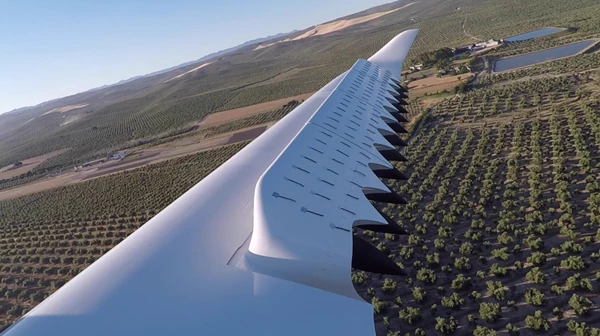The prospect of a widespread flying taxi service like that imagined by Lilium hinges on the ability of these aircraft to seamlessly transition from vertical to horizontal flight, and the aviation startup has just demonstrated a key element of this functionality. The company has altered the main wing of its all-electric aircraft in the air to this effect, achieving what it says is a first for the industry.
In order to lift off and land vertically, and travel efficiently across significant distances in between, eVTOLs like Lilium's need to generate lift in different ways. While in vertical lift and hover configuration, the company's aircraft uses small ducted fans to gain or maintain altitude. Ideally, when in forward flight mode, it would function like a conventional aircraft, saving power and relying on its carefully engineered wings to generate lift instead.
Lilium says that while its unique small fan design uses up lots of power during lift-off and hover, it offers performance benefits in forward flight by minimizing drag (more on that here). In any case, transitioning between these flight modes is a key function of the overall operation, and the company has now demonstrated a key part of this this capability using its Phoenix 2 demonstrator aircraft.

This transition was completed across its entire main wing, with the aircraft reportedly remaining stable throughout the test. Doing so makes the aircraft the first ever full-sized electric jet to transition from hover to wing-borne flight, according to Lilium, which will work towards transitioning the forward canards as it continues its test program in the coming summer months.
“Main wing transition is a huge step forward on our path to launch and it validates our Flight Dynamics Model," said Lilium Co-Founder Matthias Meiner. "Full credit goes to the outstanding Lilium team who worked so hard to get us here, and who remain laser-focused on the rest of the Flight Test Campaign.”
Here's an explanation of transition from Phoenix Chief engineer Matthais Meiner:
Source: Lilium




